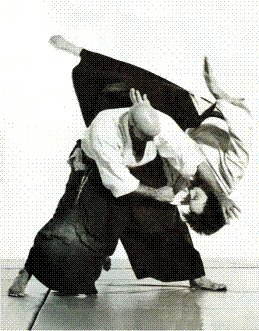A Kicking Grand Ma: Old Age is a Myth
“Old age? There is no such thing!” Mme. Jeanne Lieberman replied in response to a query whether her age of 92 plus was weighing on her. She was martial arts Grand master who lived in France. This was her response to a question by Claude Bobin. He was interviewing her. Check the 1978 September issue of the Indian Reader’s digest and you can read the article. The summary is given here.
Mme. Jeanne Lieberman started learning martial arts at the tender age of 63, when most of us would prefer retiring from the armchair to the sofa- watching the antics of our grand children. But for her, it was the beginning of a new life- a life of conquering and self–discovery plus a whole new vista of opportunities and healing for a lot of people past 60. She had prepared herself though. She was a regular practitioner of Yoga. And she had-Inspiration-lots of it!
She joined a Judo Dojo (martial arts school) in Paris. When she went to enroll, the joke goes that the instructor asked if it was for her son or her grandson.
Imagine his surprise when she replied it was for her!Her astounding progress soon put an end to the apprehensions of her instructor and her younger classmates and she completed her black belt in sharp five years! Inspiration to her classmates!
She didn’t rest on her achievement, though. She went to Japan and started polishing up her Aikido skills that she had started learning in France. Aikido is a non-violent form of self-defense. She practiced under Master Tadashi Abe for four years before she secured her black belt in Aikido(!).
No, that is not the end of the story. At the age of 72, she started learning Kung fu (Wing Chun).She received her black belt in Kung fu at the age of 80, from Master Hoangnam at the famed Shaolin temple, China! Astounding Inspiration, isn’t it? To think how much an old lady would exert, pushing herself to the limits.
Her diet is very simple: a carrot for breakfast, an egg for lunch and a potato and a spoonful of honey for supper.
Mme Lieberman’s dedication paid off abundantly. She achieved such a level of prowess that she was able to perform unbelievable feats. She has demonstrated her prowess in several ways: In one demonstration she pinned a trained (black belt), 1.8 m tall, 200 kg athlete to the ground in less than one second and then repeated the feat nine times!
Pretty tempting skill to acquire isn’t it? This should be inspiration for young and old alike.
Mme Lieberman is not an aggressive person. Her personal philosophy is rooted in silence, tolerance, understanding and love.
She returned to Paris and started her own martial arts class. She developed her own synthesized style based on the three martial arts and Yoga. Most of her disciples are in their sixties or seventies. Some of them have had extraordinary experiences. One seventy year old student was attacked by two young muggers in the dark side alleys of Paris . She was able to ward off their attack easily and hold one of them in a paralysing arm lock, with him begging for mercy.
At a time when we keep hearing stories of estranged and isolated old people, who have been abandoned by their children, Mme. Lieberman’s story is heartening in that it gives inspiration to stand up for ourselves, dig into the resources within ourselves and prove to ourselves and the world that we can take care of ourselves, and much more!
Martial arts are a sure fire way to keep oneself fit and old age at bay. Martial Arts also help to maintain peace of mind and to develop suppleness of the body.
Martial arts are one of the best ways to spend ones excess time. Of course this statement would not appeal to the enthusiastic follower, who has dedicated his life to perfection in martial arts.
The lives of people like Jeanne Liebermann convey Inspiration in us to achieve all that we are capable of. They give inspiration to transcend our limits.

 The Art of Aiki es la más completa fuente de información sobre el Aikido en Español. |
The Art of Aiki es la más completa fuente de información sobre el Aikido en Español. |